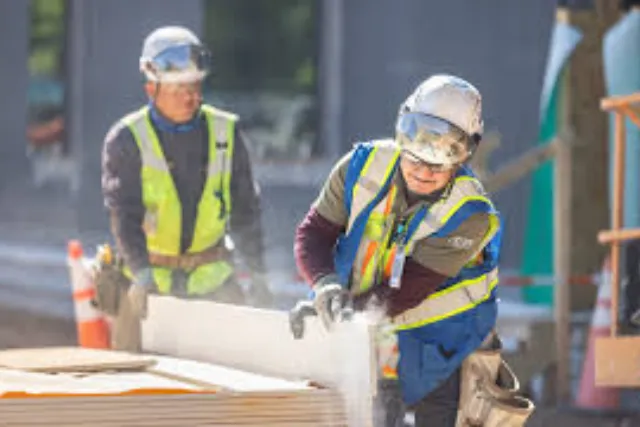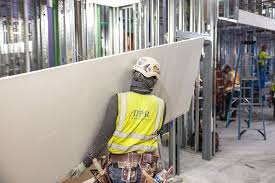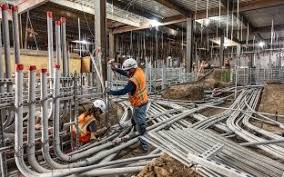
In an industry where precision and reliability are non-negotiable, more builders are turning to self-perform work (SPW) to meet the unique demands of life sciences construction. From sterile cleanrooms to biocontainment labs, specialized manufacturing facilities and critical storage, the requirements for these spaces push construction teams to deliver the highest standards of quality, safety and speed — all while navigating budget and labor pressures.

In today’s competitive environment, life sciences companies face mounting hurdles: rising costs, ongoing labor shortages, unpredictable supply chains and increasingly complex facility requirements. These challenges make self-performing general contractors (GCs) and construction managers (CMs) a strategic choice. With in-house SPW teams, contractors can keep more control over core scopes of work, ensure critical skills are available, and maintain tighter quality standards that protect sensitive scientific operations.
“Partnering with a self-performing GC can provide more predictability over project outcomes, giving you greater confidence in on-time, on-budget delivery,” industry experts say. This confidence is especially critical when constructing sterile spaces like cleanrooms, which demand ultra-precise design and installation. Materials must resist microbial growth, accept harsh cleaning agents and be seamlessly installed to prevent contamination. Advanced air filtration systems — from HEPA to ULPA — must be perfectly integrated to maintain strict ISO classifications and support sterilization systems like vaporized hydrogen peroxide or autoclaves.
The same need for precision extends to mechanical, electrical and plumbing (MEP) systems, which must hold tight tolerances for temperature, humidity and air pressure. These systems safeguard everything from drug discovery to vaccine production. Specialized structural elements also support heavy equipment, reduce vibration and comply with rigorous building codes for life sciences facilities — all tasks best handled by experienced teams with deep field knowledge.

“Complex projects require specialized skills and available labor,” say SPW advocates. Bringing labor in-house means GCs have a reliable workforce for critical scopes like concrete, drywall, and prefabricated modules — activities that can make or break a project’s schedule. Studies show that projects that integrate SPW and prefabrication can accelerate delivery by up to 20%, especially when site work and off-site manufacturing are seamlessly coordinated.
Prefabrication is central to the SPW advantage. When self-performing contractors can fabricate complex assemblies off-site and install them with minimal field work, they reduce labor needs on-site, boost productivity, and keep schedules on track. This reduces late changes and rework, which can derail precision builds in life sciences.
“By engaging a partner responsible for performing the work, owners can benefit from pre-purchasing materials or leveraging economies of scale that significantly mitigate supply chain volatility and inflationary pressures,” say SPW proponents. Bulk buying and just-in-time delivery help avoid last-minute shortages and price spikes that can impact large capital projects. Contractors can also align materials procurement with practical constructability needs, reducing unnecessary waste and making installation faster and more efficient.
Quality and safety are especially vital in facilities that must pass stringent regulatory inspections. Self-performing contractors maintain tighter quality controls because they directly train and manage their workforce. Research shows companies that invest in SPW report up to 41% fewer quality problems and nearly 50% fewer safety incidents, dramatically lowering risk for life sciences owners who can’t afford downtime or contamination events.
Before breaking ground, many SPW teams use advanced tools like Virtual Design and Construction (VDC) and Building Information Modeling (BIM) to virtually build the project. This digital twin process allows craft professionals to uncover design conflicts and safety hazards before workers ever set foot on the jobsite, ensuring smoother execution and helping align design intent with field conditions.
A real-world example of SPW success can be seen at the Edwards Life Sciences Campus Expansion, where the GC’s self-perform crews controlled critical scopes, established the pace for all trades and set a high bar for safety and quality.
Workforce engagement is another critical benefit. With an estimated 70% of the blue-collar workforce expected to retire by 2027, contractors who cultivate and retain skilled in-house teams will have a competitive edge. Engaged workers deliver higher quality work, uphold demanding safety standards and contribute to the long-term viability of complex facilities that support scientific breakthroughs.
In life sciences construction — where precision, sterility and reliability are essential — self-perform work isn’t just a cost-saving strategy. It’s how expert builders deliver certainty, value and world-class spaces that help clients launch new cures, scale manufacturing and expand global impact.
Originally reported by DPR Construction.